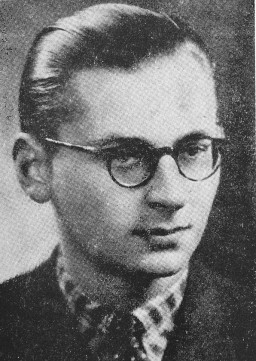You searched for: 知识付费源码快速搭建【TG���������@EK7676】平台包网搭建知识付费源码快速搭建【TG���������@EK7676】平台包网搭建4P5YtDuE3c
<< Previous | Displaying results 51-100 of 271 for "知识付费源码快速搭建【TG���������@EK7676】平台包网搭建知识付费源码快速搭建【TG���������@EK7676】平台包网搭建4P5YtDuE3c" | Next >>
-
SS and the Holocaust
ArticleLearn more about the SS and the organization’s involvement in perpetrating the Holocaust.
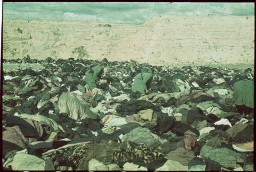
-
Anne Frank: Diary
ArticleThe Diary of Anne Frank is often the first exposure readers have to the history of the Holocaust. Learn about Anne's diary, including excerpts and images.
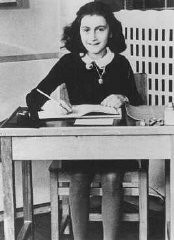
-
Blechhammer
ArticleThe Germans established the Blechhammer camp as a subcamp of Auschwitz in April 1941. Learn about the camp's history and conditions there.
-
Reichstag Fire Decree
ArticleThe Reichstag Fire Decree of February 1933 restricted individual freedoms, and allowed Hitler's government to overrule state and local laws and overthrow state and local governments.
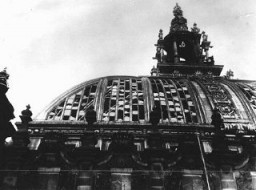
-
Nuremberg Trials
ArticleTrials of top surviving German leaders for Nazi Germany’s crimes began in Nuremberg after World War II. Read about the Nuremberg trials.
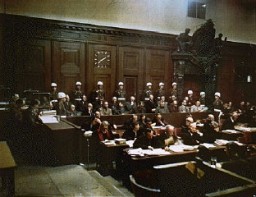
-
Rescue and Resistance
ArticleWhile some European Jews survived the Holocaust by hiding or escaping, others were rescued by non-Jews. Learn more about these acts of resistance.
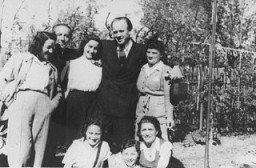
-
1939: Key Dates
ArticleExplore a timeline of key events during 1939 in the history of Nazi Germany, World War II, and the Holocaust.
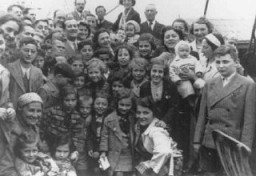
-
1945: Key Dates
ArticleExplore a timeline of key events during 1945 in the history of Nazi Germany, World War II, the Holocaust, and liberation and the aftermath of the Holocaust.
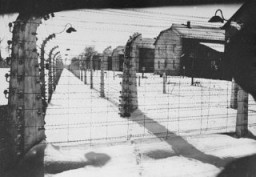
-
Reich Security Main Office (RSHA)
ArticleThe Reich Security Main Office (RSHA), created by Heinrich Himmler, brutally coordinated and perpetrated many aspects of the Holocaust.

-
Mein Kampf
ArticleAdolf Hitler's Mein Kampf (My Struggle) is the best known and most popular Nazi text ever published with over 12 million copies sold from 1925 to 1945.
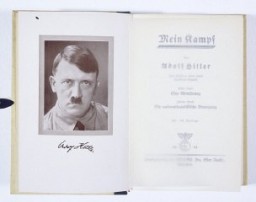
-
Mechelen - Maps
Media EssayIn the summer of 1942, the Germans made preparations to deport the Jews of Belgium. They converted military barracks in the city of Mechelen into a transit camp. Between August 4, 1942, and July 31, 1944, a total of 28 trains carrying 25,257 Jews left Mechelen for German-occupied Poland; most of them went to Auschwitz-Birkenau. This figure represented more than half of the Belgian Jews murdered during the Holocaust.
-
Destruction of Lidice
FilmCzech resistance fighters attacked Reinhard Heydrich, acting governor of the Protectorate of Bohemia and Moravia, in an ambush near Prague in May 1942. Heydrich died of his wounds on June 4, 1942. In retaliation for the attack, the Germans destroyed the village of Lidice on June 10, 1942. The Germans shot all the men in the village and deported most of the women and children to camps in Germany. This footage shows destroyed homes and German officials inspecting the remains of the village.
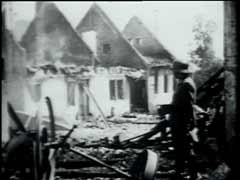
-
Portrait of David Pesso
PhotoPortrait of David Pesso. He was a dealer of second-hand items. He lived at Novatska 4 in Bitola. This photograph was one of the individual and family portraits of members of the Jewish community of Bitola, Macedonia, used by Bulgarian occupation authorities to register the Jewish population prior to its deportation in March 1943.
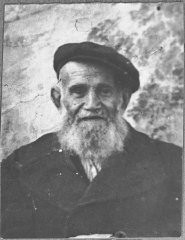
-
A Polish former inmate of Auschwitz testifies during the Pohl/WVHA trial
PhotoA Polish former inmate of Auschwitz identifies Oswald Pohl while on the stand for the prosecution during the Pohl/WVHA trial. This trial, case #4 of the Subsequent Nuremberg Proceedings, took place in a room in the Palace of Justice which was not the main courtroom. Nuremberg, Germany, April 18, 1947.
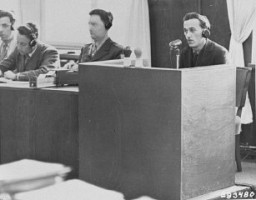
-
Arriving at the Fort Ontario refugee shelter
PhotoJewish refugees from Europe arrive at the emergency refugee shelter at Fort Ontario, in the United States. A father, holding his daughter, checks his tags. Oswego, New York, United States, August 4, 1944.
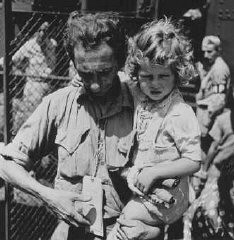
-
Police search a messenger for a Social Democratic newspaper
PhotoPolice search a messenger at the entrance to the building where Vorwaerts, a Social-Democratic Party newspaper, was published. The building was subsequently occupied during the suppression of the political left wing in Germany that was carried out in response to the Reichstag Fire. Berlin, Germany, March 3–4, 1933.
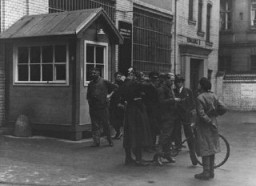
-
US soldiers view the charred remains of prisoners at Ohrdruf
PhotoWhile on an inspection tour of the newly liberated Ohrdruf concentration camp, American soldiers view the charred remains of prisoners burned upon a section of railroad track during the evacuation of the camp. Ohrdruf, Germany, April 4-15, 1945.
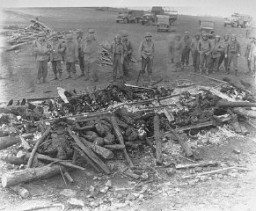
-
The main gate of the Wöbbelin concentration camp
PhotoThe main gate of the Wöbbelin concentration camp. On May 2, 1945, the 8th Infantry Division and the 82nd Airborne Division encountered the Wöbbelin concentration camp. Photograph taken upon the liberation of the camp by US forces. Germany, May 4, 1945.
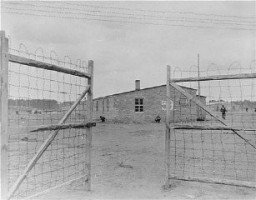
-
Antisemitic sign outside a town in northern Bavaria
PhotoA sign outside a town in northern Bavaria warns: "City of Hersbruck. This lovely city of Hersbruck, this glorious spot of earth, was created only for Germans and not for Jews. Jews are therefore not welcome." Hersbruck, Germany, May 4, 1935.
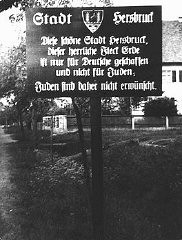
-
Martin Niemöller on a visit to the United States after World War II
PhotoMartin Niemöller, a German theologian and pastor, on a visit to the United States after the war. A leader of the anti-Nazi Confessing Church, he spent the last seven years of Nazi rule in concentration camps. United States, October 4, 1946.
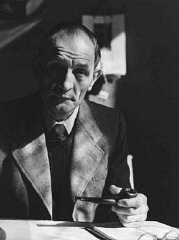
-
Aerial photograph of Auschwitz-Birkenau
PhotoAerial photograph of Auschwitz II (Birkenau). Poland, December 21, 1944. This image is one of a series of aerial photographs taken by Allied reconnaissance units under the command of the 15th US Army Air Force during missions dating between April 4, 1944, and January 14, 1945.
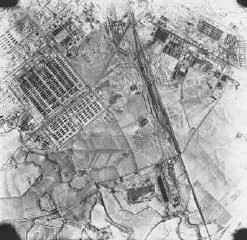
-
Page from Otto Wolf's diary
PhotoOtto Wolf (1927-1945) was a Czech Jewish teenager who chronicled his family's experience living in hiding in rural Moravia during World War II. His diary was published posthumously. This image shows book 4 of Otto Wolf's diary. This is the first entry by Felicitas Garda (Otto Wolf's sister) dated April 17, 1945. Felicitas continued Otto's diary after his disappearance.
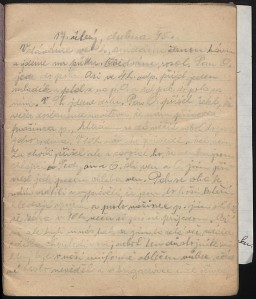
-
Tunisia Campaign
ArticleLearn more about the 1943 Tunisia campaign, a four-month long struggle between Allied and Axis powers in North Africa during World War II.
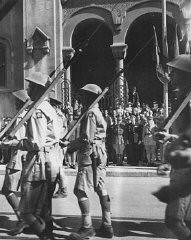
-
Hajj Amin al-Husayni: The Mufti of Jerusalem
ArticleHajj Amin al-Husayni, former Mufti of Jerusalem, participated in a pro-Axis coup in Iraq in 1941. Learn about his pro-Axis actions during WWII.
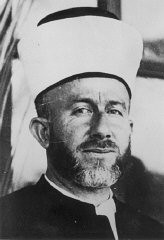
-
Operation "Harvest Festival"
ArticleLearn about Operation “Harvest Festival” (Aktion “Erntefest”), the Nazi attack against the remaining Jews of the Lublin District of the General Government.
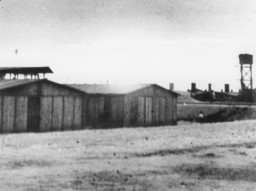
-
Germany: Jewish Population in 1933
ArticleLearn more about the Jewish population in Germany in 1933.
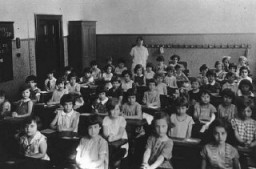
-
Mechelen
ArticleThe Mechelen camp, halfway between Antwerp and Brussels, was a transit camp for the deportation of Jews from Belgium during the Holocaust.
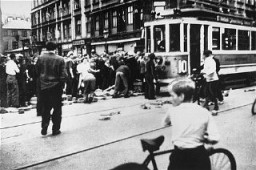
-
Rome
ArticleLearn more about Rome, Italy during the German occupation between 1943-1944 and the fate of the Jews living there.

-
Fire Oaths
Article“Fire Oaths” were statements that declared why the works of certain authors were thrown into the flames during the 1933 burning of books under the Nazi regime.

-
Nursery school children at the Heart Mountain Relocation Center
PhotoA group of nursery school children at the Heart Mountain Relocation Center in Wyoming, January 4, 1943. The Heart Mountain Relocation Center was one of ten relocation centers where Japanese Americans were forcibly deported.
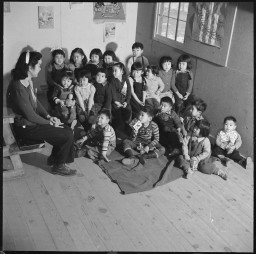
-
Work permit issued to Max Diamant
DocumentDr. J. Rebhan, chair of the Jewish council in Przemysl, Poland, signed this document certifying that Max Diamant had stable employment in the Jewish clinic. The certificate identifies Diamant as a dentist and is dated June 4, 1942. During World War II, the Germans established Jewish councils to ensure that Nazi orders and regulations were implemented. Jewish council members also sought to provide basic community services for ghettoized Jewish populations.
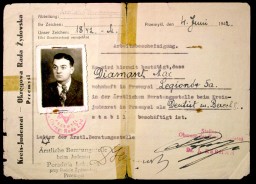
-
The Nazi Olympics Berlin 1936: African American Voices and "Jim Crow" America - Photos and Videos
Media Essay18 African Americans (16 men and 2 women) competed in the 1936 Olympic Games in Berlin. This was three times the number who had competed in the 1932 Los Angeles Games. The African American athletes on the 1936 US Olympic team brought home 14...
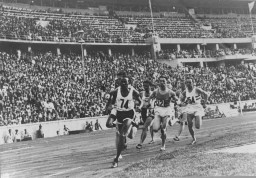
-
Auschwitz I camp, 1944
MapSelected Features 1. Camp Commandant's House 2. Main Guard House 3. Camp Administrative Office 4. Gestapo 5. Reception Building/Prisoner Registration 6. Kitchen 7. Gas Chamber and Crematorium 8. Storage Buildings and Workshops 9. Storage of Confiscated Belongings 10. Gravel Pit: Execution Site 11. Camp Orchestra Site 12. "Black Wall" Execution Site 13. Block 11: Punishment Bunker 14. Block 10: Medical Experiments 15. Gallows 16. Block Commander's Barracks 17. SS Hospital

-
Hainichen
ArticleIn 1933, the Nazis established the Hainichen labor camp in Sachsen, Germany. Learn more about the camp, its closing, and the prisoners.
-
Subsequent Nuremberg Proceedings
ArticleAmerican military tribunals presided over 12 Subsequent Nuremberg Proceedings against leading German industrialists, military figures, SS perpetrators, and others.
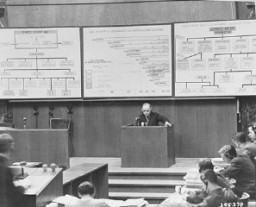
-
Yalta Conference
Timeline EventFebruary 4-11, 1945. On this date, Allied power leaders met at Yalta in the Soviet Union to discuss the postwar order.
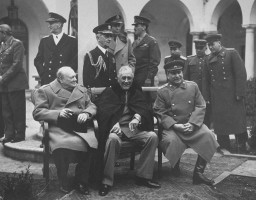
-
The 26th Infantry Division during World War II
ArticleThe 26th Infantry Division participated in major WWII campaigns and is recognized for liberating the Gusen subcamp of Mauthausen in 1945.
-
The 89th Infantry Division during World War II
ArticleThe 89th Infantry Division participated in major WWII campaigns and is recognized for liberating the Ohrdruf subcamp of Buchenwald in 1945.
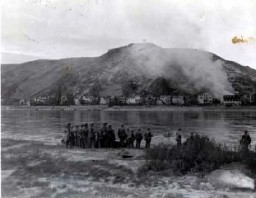
-
The 4th Armored Division during World War II
ArticleThe 4th Armored Division participated in major WWII campaigns and is recognized for liberating the Ohrdruf subcamp of Buchenwald in 1945.
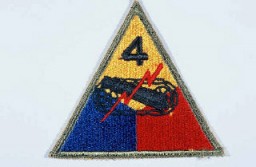
-
Börgermoor Camp
ArticleBörgermoor was part of the Nazi regime’s early system of concentration camps. It was located in the Emsland region of Prussia.
-
Euthanasia Program and Aktion T4
ArticleThe Nazi Euthanasia Program, codenamed Aktion "T4," was the systematic murder of institutionalized people with disabilities. Read about Nazi “euthanasia.”
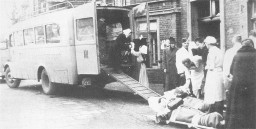
-
Halle
ArticleHalle an der Saale was a satellite camp of Buchenwald concentration camp. It was established by the Nazis in Saxony, Germany in 1941.
-
Operation Reinhard (Einsatz Reinhard)
ArticleNazi Germany established the killing centers of Belzec, Sobibor, and Treblinka as part of “Operation Reinhard,” the plan to murder all Jews in the General Government.
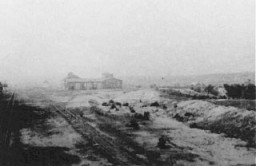
-
Background: Jurists' Trial Verdict
ArticleThe Justice Case, or Jurists’ Trial, of the Subsequent Nuremberg Proceedings tried members of the German justice administration. Browse excerpts from the verdict.
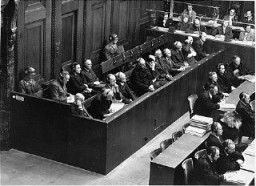
-
Theresienstadt: Key Dates
ArticleExplore key dates in the history of the Theresienstadt camp/ghetto, which served multiple purposes during its existence from 1941-45.
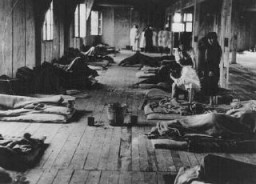
-
The Nazi Olympics Berlin 1936: African American Voices and "Jim Crow" America
ArticleAfrican American athletes, facing racism at home, also debated whether to join or boycott the 1936 Olympic games in Germany, then under a racist dictatorship. Learn more.
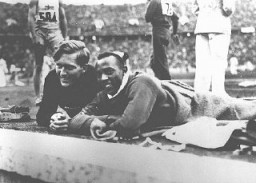
-
The Rosenstraße Demonstration, 1943
ArticleIn February/March 1943, non-Jewish Germans protest the incarceration of their Jewish family members at Rosenstrasse 2-4 in Berlin. Learn about the impact of the protest.
-
Death Penalty for Aiding Jews
Timeline EventSeptember 5, 1942. On this date, Germans issued this poster announcing the death penalty for anyone found aiding Jews who fled the Warsaw ghetto.
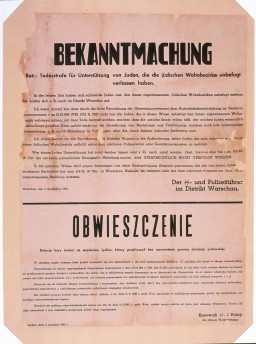
-
Nuremberg Race Laws
ArticleLearn more about the Reich Citizenship Law and the Law for the Protection of German Blood and German Honor, collectively known as the Nuremberg Race Laws.
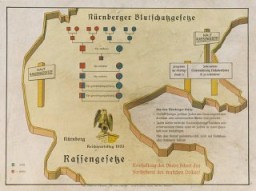
-
The Council for Aid to Jews: Żegota
Media EssayThe Council for Aid to Jews (codenamed “Żegota”) was an underground rescue organization of Poles and Jews. It operated in German-occupied Poland from December 4, 1942, to January 1945 and was supported by the Polish government-in-exile. Żegota’s main objective was to coordinate efforts to save Jews from Nazi persecution and murder. Its members worked clandestinely, often risking their own lives and the lives of their families and friends. Żegota supplied tens of thousands of Polish Jews with fake…
